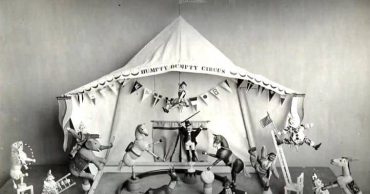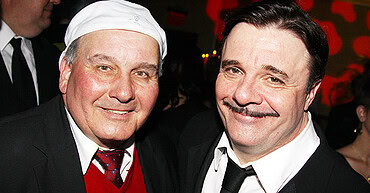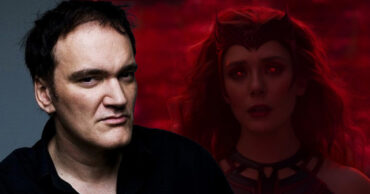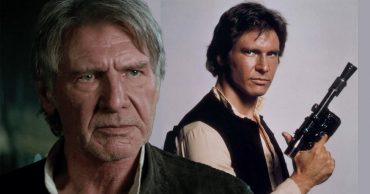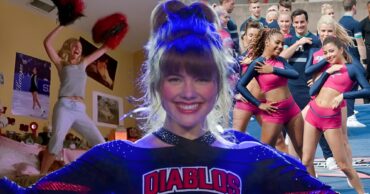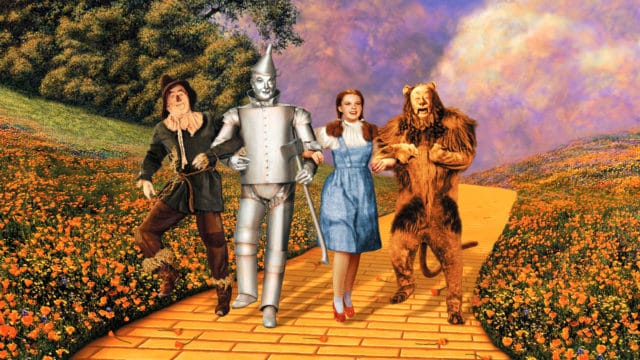
There is no one person that can make a movie great. In fact, it takes hundreds of professionals and non professionals working together to create a major film project. Among the huge crew you will find producers, screenwriters, showrunners, directors and actors. There is no doubt that the director has a lot of influence over how well the film will turn out. He or she is responsible for having a vision for the film, and for guiding the actors in achieving the goal of the film. In certain instances, things go wrong and the directors must be replaced.
Here are 20 great movies who replaced the directors.
1. “Ant-Man”
“Ant-Man” is a popular movie that is especially loved by Marvel comic fans. It took Edgar Wright five years to develop this project. It began around the time of Comic Con in San Diego in 2006. These were the days when the Marvel Cinematic Universe was just a notion and a hunch for the studio execs. They made steady, but slow progress. The master plan was to release the completed film in 2015. The movie was in the full swing of production in May of 2014. They were preparing to do a smooth and efficient shoot. The script had been finished and the cast had all been set in place. It came out of the blue that Wright was leaving Marvel. The reason was cited as creative differences. Paul Rudd, who was starring in the film rewrote the script with the help of Adam McKay and Peyton Reed was hired to take Edgar Wright’s place as the director.
2. “Brave”
This film started out with Brenda Chapman as the director. She is experienced in directing animated films such as “The Prince of Egypt,” “Beauty and the Beast” and “The Lion King.” She had worked on “Brave” for a number of years prior to its production. When the film first began it was titled “The Bear and the Bow.” The details about why Chapman parted ways with Pixar were never fully disclosed, but she did say that she wasn’t happy with the leadership or the atmosphere of the company. She refused to return to work for them. After Chapman left, Pixar hired Mark Andrews to direct the movie.
3. “The Hobbit”
“The Hobbit” was originally supposed to be two movies. It is the adaptation of the JRR Tolkien classic book. The films would be called “An Unexpected Journey” and “There and Back Again.” Guillermo Del Toro, was set to direct both films. He is well known for directing “Hellboy” and “Pan’s Labyrinth.” Del Toro assisted in the beginning of the films to provide his interpretation of the book alongside the producers and writers. In 2010, Del Toro made the difficult decision to exit production work on the film. He left because here were far too many delays taking place. He had spent a lot of money on the film already as well as much time and effort. The start date had been pushed back multiple times because it had not received a green light. Peter Jackson had been working with Del Toro prior as a producer. Jackson stepped up to the director position and took over the role which instead of two films, became three.
4. “Spartacus”
This is one of the greatest films in the history of cinema. It starred Kirk Douglas in the leading role and is still remembered as a great American classic, but the behind the scenes drama is something that most fans were not aware of. Anthony Mann was the original director on the set. Production proceeded for a week before Kirk Douglas fired him. He didn’t feel that Man was the right man for the job because of the epic boldness of the film. He brought a young Stanley Kubrick on board and this changed the new director’s professional life forever. He wasn’t allowed absolute creative control in his debut, this would come later as Douglas held the bottom line. The film was a blockbuster and Kubrick went on to have a very successful career as director of many great movies.
5. “Moneyball”
This 2011 film served as a documentary type movie which included interviews with real baseball players who were not actors. It was director Steven Soderbergh’s idea to proceed with production in this manner. The Sony executives didn’t feel comfortable with this approach so the film was brought to a halt until the situation could be negotiated. This happened just days before filming was set to commence. They decided to remove Soderbergh and replace him with Bennett Miller as director. Aaron Sorkin rewrote the script, production proceeded and the film ended up doing well at the box office in addition to earning six Academy Award nominations.
6. “The Wizard of Oz”
We all remember the old classic movie from 1939 starring Judy Garland. Modern viewers would be shocked to learn that the film barely broke even when all was said and done. There were not just two, but a total of four directors who worked on production of the film. The first was Richard Thorpe. He lasted two weeks before being replaced by Buddy Ebsen, who also starred n the film as the Tin Man. Ebsen had a close call with death because of the aluminum makeup that covered his skin for the part. The powdered metal caused issues in his lungs. George Cukor was the next to take the director’s helm. He was responsible for changing Dorothy’s hair color from blonde to Red. Instead of the overly made up blonde that the character was originally created as, he turned her into the wholesome farm girl that we all adored. He made a positive impact on the film until he was forced to move to another film project that he was involved in. The fourth and final director for the film was Victor Fleming. He was full time and permanent on the set.
7. “WarGames“
This film was released in the 1980s and remains one of the greatest films about artificial intelligence before we really knew its potential. It became a cult film for people of all ages. The plot involved an AI creation that threatened to instigate World War III with the potential for ending life on earth. Martin Brest was the first director to head production of the film. Brest didn’t work out because execs were not fond of his approach. It was almost too intensely dark for what producers had envisioned for the tone. They allowed him to proceed for 12 days before firing him. John Badham of “Short Circuit” and “Saturday Night Fever” was hired to replace him.
8. “Gone With The Wind”
Another classic, that George Cukor had his hand in developing. It was for this film that he left “The Wizard of Oz.” This film was based on the Margaret Mitchell novel and was adapted for the big screen. Cukor stayed with the production crew for only a few weeks. He and leading man Clark Gable had serious differences and Cukor also had a few creative differences with the main producer David O. Selznick. Low and behold, for a second time in a row, Victor Fleming was brought on board as his replacement.
9. “Apocalypse Now”
This was perhaps one of the boldest and most ambitious films ever produced. It took viewers on an odyssey with a surreal ethos in the heart of the Vietnam War. The original director of the film was George Lucas. It was first titled “The Psychedelic Soldier,” but through the early concept years, it was re-written by screenwriter John Milius and George Lucas. Lucas wanted the film delivered in a documentary style format. There were quite a few obstacles which prevented the movie from moving ahead in a timely manner and Lucas moved on to direct “American Graffiti” and “Star Wars.” It was Francis Ford Coppola who took over the filming and direction, and after the long slow grind, production was finally underway.
10. “Fear and Loathing in Las Vegas”
The film that stars Johnny Depp and Benecio Del Toro is an adaptation of the autobiographic novel written by the late Hunter S. Thompson. It is a comedic approach to the hippie era of the 1960s. The film was a slow burner that pros didn’t really believe was filmable. It started out as an animation, but Ralph Bakshi couldn’t get his hands on the rights. The great Oliver Stone and Martin Scorsese also attempted to come up with a workable solution for the film. It was Alex Cox who was finally hired by Rhio films to direct the film, just as the rights to the novel would expire. It was a last minute decision, but Cox and the producers quickly experienced creative differences to the magnitude that Cox didn’t work out. To complicate things further, Hunter S. Thompson simply didn’t like him. It took a while, but they finally fired Cox and replaced him with Terry Gilliam. The script was ready to roll in ten days and the film came together in a beautiful way.
11. “Schindler’s List”
Steven Spielberg began development of this project in the late 1980s. It is the true story of the holocaust drama that is based on the life of Oskar Schindler. Spielberg wanted Martin Scorsese to take the job of directing the film, but he told Steven that he felt a film of this great importance would require a Jewish filmmaker to do it justice. Roman Polanski was given the second shot, but declined because the film hit too close to home for him as a holocaust survivor himself. Spielberg finally gave in and directed the film, which was a major success, himself.
12. “Cape Fear”
At the same time that Spielberg was working on on “Schindler’s List,” he also had a remake of “Cape Fear” in mind. Spielberg moved forward in the development of the project but he was put off by the intense violence which he found to be distasteful. He turned over the director’s reigns to Martin Scorsese who worked with Nick Nolte, Jessica Lange and Robert DeNiro in the horrific thriller.
13. “Queen Kelly”
This film was released in 1929. Gloria Swanson was the star of the film and during this era, she was at the top of the list. The original director Erich von Stroheim was one of the biggest directors so it made sense to team them up together. The film focused on a prince who kidnapped a girl from a convent. The two end up unhappily married in Africa and the girl became a madame who ran her own brothel. Soon, there were differences between Swanson and von Stroheim. He attempted to interject material that she believed was too racy. With the two of them bickering and the film coming in way over budget, von Stoheim was fired and Swanson herself took over directing the final portion of the film. Although the film was not allowed for release in the United States, due to a clause in von Stroheim’s contract, it went on to be a big hit in South American and Europe.
14. “Toy Story 2”
Pixar intended the film to be a sequel that would be a strait to video production. The team that they brought onboard was small and they produced good work for a kids’ movie, but it didn’t quite hold up to Pixar standards. Disney liked the footage that they saw and realized that this film should be released in theaters. It wasn’t ready for this type of launch because the quality produced by Ash Brannon wasn’t theater material. It wasn’t originally intended to be either. It was John Lasseter the boss of Pixar who took over as director to get the project done in time to beat the release date deadline.
15. “Layer Cake”
The original director of this film was Guy Ritchie. He had a load of great experience and seemed the best choice for the job. He was hired for the job for the film that is based on J.J. Connolly’s book, but he had some major scheduling conflicts and had to step out of the director’s chair. It was Matthew Vaughn who took his place. This was Vaughn’s directorial debut. He worked brilliantly with Daniel Craig to deliver a top quality film.
16. “The Outlaw Josey Wales”
This is one of the best westerns in actor Clint Eastwood’s portfolio. Philip Kaufman was involved in the pre-production phase of the film with script writing, scouting for location and several other jobs that needed to be done ahead of time. Eastwood initially wanted Kaufman as director, but after the two began to work together, they had some serious differences in opinion. Part of the problem was that both Eastwood and Kaufman had their eye on co-star Sondra Locke. It was Eastwood who fired Kaufman and took his place as director of the film. There was fallout from the Director’s Guild of America over the controversial incident. It was because of the event that the Guild enacted a rule that they titled “The Eastwood Rule.” It held that no actor could fire a director and then take over their position.
17. “Superman II”
Richard Donner was the original director for “Superman” as well as the sequel. They would be created at the same time. When the first installment was released, there was more work left to be done for the sequel. Donner had had a rough time with producers throughout the process for the first film. They wanted a touch of silliness for the tone and Donner felt that a few comedic touches were sufficient. The producers ended up firing Donner. They replaced him with Richard Lester close to the end of production.
18. “The Island of Dr. Moreau”
This 1996 film began with Richard Stanley as director. He himself had been working of the development of a new remake of the original version. It took four years to get the green light to proceed. It came from New Line Cinema. Marlon Brando agreed to appear as well as Val Kilmer. Kilmer was having a tough time because he was going through a divorce at the time. He was fairly insubordinate to the director. The studio blamed Stanley for the problems and fired him. They replaced him with John Frankenheimer. There was more trouble to come. Because of Stanley’s firing, co-cast member Rob Morrow left along with him. The whole script had to be re-written. Kilmer made life miserable for everyone on the set and Frankenheimer’s work was also being scrutinized, but he stuck it out to completion.
19.”Ratatouille”
The original director for the animated film was Jan Pinkava. Pixar is the type of company where people believe that the environment is upbeat and there are seldom any issues with the job, but this is a misconception. It is a haven for creative disagreements. Pinkva was an Oscar winning director, He had envisioned the film to be a bit more ethereal, but producers felt that his version needed to have a more concrete story than it did. He was fired from the job. Jan was replaced by Brad Bird who took 18 months to overhaul the project and bring it to completion more in line with what the producers were looking for.
20. “Exorcist The Beginning”
The original directors for this 2004 film were John Frankenheimer and Paul Schrader. the script had been written by Caleb Carr, then re-written by William Wisher so it would tell Father Merrin’s story of his first encounter with Pazazu, the demon. They wanted the film to exude certain qualities. Frankenheimer experienced severe health problems that soon led to his death. Paul Schrader filled the director’s chair as next in line for the film. After Schrader delivered his cut to Morgan Creek studio, they were concerned with the lack of commercialism and brought on a new writer, Alexi Graham to make a completely new film. Nevermind that Schrader’s version had cost $30 Million. They invested an additional $50 Million for the new director Renny Harlin’s version.
 Follow Us
Follow Us
